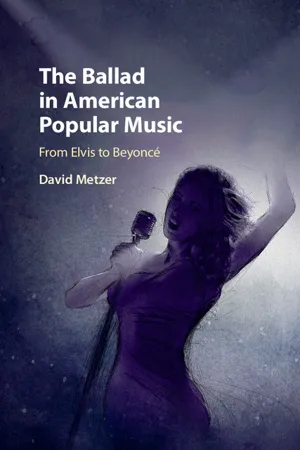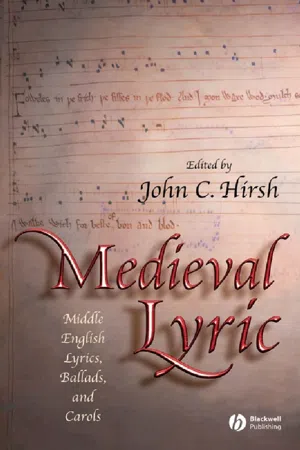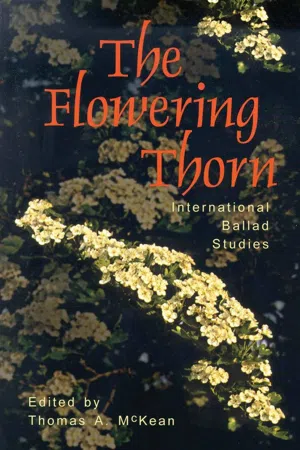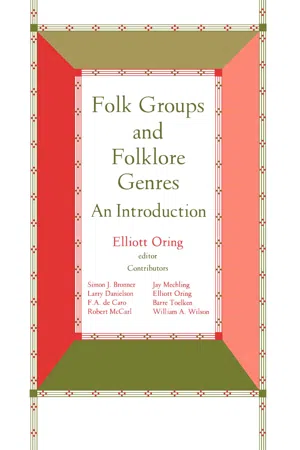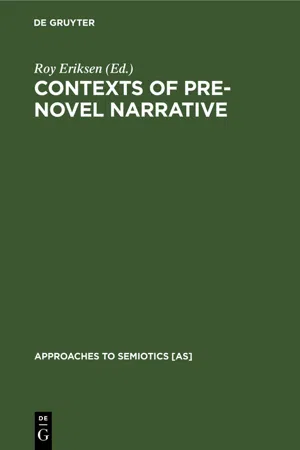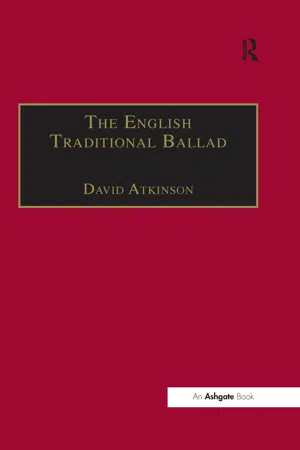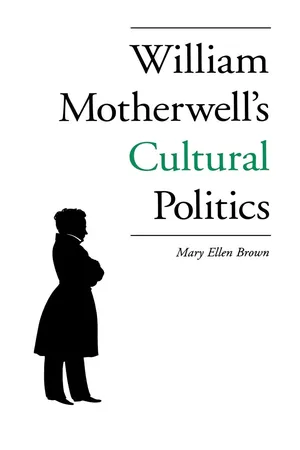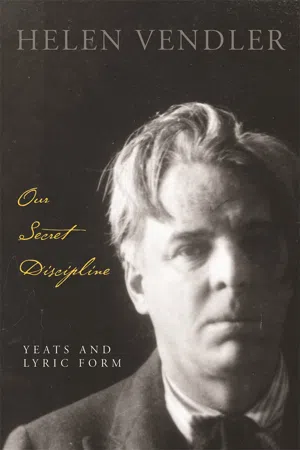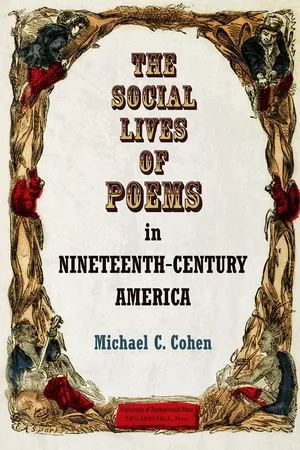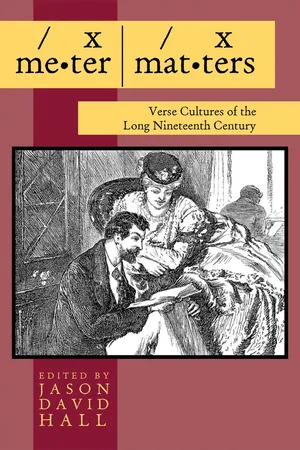Literature
Ballad
A ballad is a narrative poem or song that tells a story, often focusing on themes of love, tragedy, or adventure. Ballads typically have a simple and repetitive structure, making them easy to remember and perform orally. They are known for their emotional impact and have been a popular form of storytelling in many cultures throughout history.
Written by Perlego with AI-assistance
Related key terms
1 of 5
11 Key excerpts on "Ballad"
- eBook - PDF
The Ballad in American Popular Music
From Elvis to Beyoncé
- David Metzer(Author)
- 2017(Publication Date)
- Cambridge University Press(Publisher)
We know one when we hear one, but we never stop to think exactly what we know about them. So to get things started, I will provide a concise definition: A Ballad is a song set to a slow tempo that deals with feelings of love and loss. I will fill out that definition as we go along, but let’s begin with a discussion of the term “Ballad.” It is an unusual term in popular music 1 The episode aired on 18 November 2009. 1 because it has been around for centuries and has been used in different ways. “Blues” and “rock” may be venerable names in popular music, but they are fledglings compared to “Ballad.” To his credit, Mr. Schuester opens his rehearsal with an etymology lesson, telling the class that “Ballad” comes from a Middle English term. Not exactly. There are Latin and Middle French precedents, but we do not need to quibble with Mr. Schuester or descend into the etymological mines. The important thing for us is that by the Middle Ages there is a type of song called Ballad, one that is still around today, although it is not the type that we will be looking at. This other kind of Ballad arose from the age-old act of storytelling. The lyrics narrate tales, which are presented in a sequence of stanzas. The stanzas are set to the same music, repetitions that made the songs easier to remember for the singers and to pass on through following generations. The songs took up treasured topics, including religious stor- ies, battles, supernatural incidents, and romance. Especially grisly are murder Ballads, which recount the events leading up to a killing, the act itself, and the aftermath. The popularity of murder Ballads in the United States during the eighteenth and nineteenth centuries reveals how estab- lished the narrative Ballad had become in American musical life. The songs were central to different folk traditions, particularly those of the Appalachians and West, and, when polished up, could also be heard in domestic parlors and concert halls. - Michael Ferber(Author)
- 2012(Publication Date)
- Cambridge University Press(Publisher)
Our words “ball” and “ballet” are from the same Latin source. They tell a story, often about love or war, and usually enter it near the climax or most dramatic moment. There is little background or context setting, characters are generic types and thinly sketched, the narrator’s voice is impersonal, and the diction is simple and unembellished. Most oral Ballads were divided into stanzas or strophes, with rhyme or other sound effects; in English the typical “Ballad stanza” had alter- nating four-beat and three-beat lines, four lines to a stanza, and rhymed abab or abcb. Romantic Ballads 147 Scholars have disputed whether traditional Ballads were composed by “the people” collectively as they sang and danced them, or were composed by individuals, who may or may not have been professional minstrels, and then altered over the years as successive generations performed them. This may be a distinction without a difference, as even during a group composition session surely some individuals will contribute more bits than others, and a single singer may take the new song to another community, altering it a little in the process, while even among the guild of professional Ballad-bards a great deal of borrowing and reworking of traditional material must have been common. At any rate, by the late eighteenth century literary scholars had “discovered” the Ballads and begun to collect them, recording their words (and sometimes music) in anthologies such as Thomas Percy’s Reliques of Ancient English Poetry (1765), which launched the “Ballad revival,” and Walter Scott’s Minstrelsy of the Scottish Border (1802). Inspired by Percy, Germany saw a similar vogue for collecting Ballads, and that in turn led to the writing of a new sort of Ballad by literate and educated poets, the KunstBallade or “art Ballad.” In 1771 Gottfried August Bürger pub- lished a long KunstBallade called “Lenore,” based on a much shorter Ballad in Percy’s Reliques, and it caused a sensation.- eBook - PDF
Medieval Lyric
Middle English Lyrics, Ballads, and Carols
- John C. Hirsh(Author)
- 2008(Publication Date)
- Wiley-Blackwell(Publisher)
= a bad tale, an evil-spun yarn Euer it wole out.” Thout Y on no gyle. Alas, alas . . . IX Ballads Of all the genres which make up English and American poetry, Ballads are among the best known and also, until very recently at least, the least studied. Their appeal is, and has been, pretty nearly universal: minstrels of old and modern folk singers alike have produced them in relatively large numbers, and though as a genre they are not easy to define, they are carefully preserved both in rare book rooms and in coffee houses, and are notable not only for their ability to draw their audience into the world which they create, but also in the way they linger in the imagination long after their performance (or their reading) is completed. Probably the most studied of these poems are those which are now called “tra-ditional British Ballads,” though it is not possible to know when these separated off from other vernacular performance poems and came to constitute a separate sub-genre. Their early history is further complicated by the fact that the word Ballad , derived from the French Ballade , could be applied to virtually any form of sung narrative poetry, from “The Hunting of the Cheviot” to the longer Robin Hood narratives. But their lineage reaches down to Woodie Guthrie, Pete Seeger, Bob Dylan, and beyond. As far as the traditional folk Ballad is concerned, few examples are preserved in early medieval manuscripts (most British Ballad manuscripts are sixteenth cen-tury or later), a circumstance which led to the speculation that most of them were in fact composed no earlier than the late eighteenth century, when the English antiquary Bishop Thomas Percy (1729–1811) published his three-volume collec-tion Reliques of Ancient English Poetry , which first appeared in London in 1765. - eBook - PDF
The Flowering Thorn
International Ballad Studies
- Thomas Mckean(Author)
- 2003(Publication Date)
- Utah State University Press(Publisher)
In Slovenia, Ballad came to be used in literary historical studies for shorter narrative songs about unusual, dramatically tense, sometimes-terrifying events from the world of fairy tales, myths, history, and also modern times, where epic components are linked with dramatic and lyrical ones. Some Ballads may also, therefore, be lyrics (Kos 1987: 173 74). Slovenian literary practice also began to differentiate between the folk romance and the Ballad, following the model of literary poetry, though it is well known that, in Spanish tradition, romance applies to a shorter epic/lyric song of Spanish origin, similar to the Ballad in motifs and themes but different in spirit, mood, style, and composition and with a particular verse form. Slovenian academics have therefore classified some folk Ballads as romances, rather than true Ballads, by analogy with the more-cheerful, less-tragic literary romances, Kralj Matja [King Mathias] and Pegam and Lambergar (Kos 1996: 269 70), for example. In contrast with the literary Ballad, whose emphasis is mainly on content, the folk Ballad concentrates on narration. The criteria on which we classify a song as a Ballad should therefore be its level of drama. In comparison to the epic song, the Ballad is shorter, its narration is more condensed, and the level of drama is intensified so that dialogue is foregrounded. There are more than three hundred types of narrative song in Slovenian tradition, with Ballads the most numerous. 295 296 Marje tka Go le Kauèiè In Slovenia, the term folk Ballad is defined very differently in academic and literary tradition, resulting in confusion when discussing Ballads in relation to folk and literary poetry. A typical heroic, narrative song such as Pegam and Lambergar is thus, according to literary historians, a romance because of its light nature and description of the time of the knights, while according to folklor- ists, it is a typical heroic narrative song or Ballad (Kos 1979: 70). - eBook - ePub
Folk Groups And Folklore Genres
An Introduction
- Elliott Oring(Author)
- 1986(Publication Date)
- Utah State University Press(Publisher)
10 For example, of one hundred different versions, do all — or most — feature a contrast between women of different complexion? Does the action always proceed from selfish or socially inappropriate advice from an adult family member? Is there always a dialogue between the two female characters? Do murder and suicide always conclude the action? Do the two lovers always reunite in the form of plants? These questions allow us to see what the main concept of the song has been through time and then to recognize the various departures, regional specializations, and singers’ preferences which have had an effect on the Ballad through time and across space. Nothing is as central to the critical study of folklore as this often cumbersome but obligatory investigation of variant expressions of the same basic item, whether the subject be Ballads, barns, quilts, legends, or recipes for potato salad.The same kind of scrutiny is given lyric folksongs, of course, but here we do not have the structure of a narrative to help us in determining meaning. In a story, we know certain things almost in advance: of course Fair Eleanor will attend Lord Thomas’s wedding, for otherwise, the rest of the action cannot take place. Of course Bluebeard’s wife will look in the forbidden room, and Jack will climb the beanstalk, and the Prince will discover that the glass slipper fits the beautiful girl in the corner rather than the first ugly sister. Traditional stories are based on traditional logic, much of which we share through having learned it in a myriad of traditional forms. A lyric is more ambiguous; in fact, it thrives on ambiguity and allusion. Lyrics gain much of their meaning from the way they are sung, and the situations in which they are sung. Thus the ambiguity inherent in a lyric actually enhances its capability of being personalized and made compatible with and appropriate to the live scene in which it is performed. For these reasons, when we study lyric folksongs, we need to know more about the context and style of the actual performance. We must also be ready to allow the lyric words and music to evoke responses in us which we can use in the formulation of potential meanings. We need to be ready to admit, and even appreciate the fact, that a lyric can mean more than one thing, even to the same singer, and that this possibility for complexity and richness in meaning is precisely why we sing lyrics — they often communicate a feeling or idea that cannot be articulated so well in any other fashion. In short, they are lyrics not because they are short, or because singers have a poor memory, or because they are songs lacking - eBook - PDF
Contexts of Pre-Novel Narrative
The European Tradition
- Roy Eriksen(Author)
- 2020(Publication Date)
- De Gruyter Mouton(Publisher)
Better qualified than any medievalist to pronounce on the matter was the nineteenth-century minstrel and poet John Clare, who (in what is clearly a perceptive adaption of a common idiom rather than a spelling-mistake) speaks of how remembrance ... handles down traditional song, implying an active, even craftsman-like rendering of what is passed on. 2 My insistence on speaking of Balladic characteristics, or the Balladic narrative mode, rather than simply the Ballad is necessitated by a disturbing circumstance which is basic to the Ballad question, and vital to its resolution: there is no such thing as a Ballad — in the sense of a corpus of songs displaying the chracteristics just listed with sufficient regularity and consistency to merit being placed together, and so distinguised from other songs lacking these features, as a specific genre. It is undoubtedly this circumstance which prevented Francis James Child from formulating to his own satisfaction his promised definiton of the Ballad, and which has prompted the growing chorus of complaint that he failed to apply consistent criteria in selecting and rejecting material for his collection of English and Scottish Popular Ballads, to which many later studies appeal as their standard of what is a popular Ballad. 3 As far as genre is concerned, it is possible to speak only of the narrative, stanzaic song — that is a story told through the vehicle of a repeated melodic pattern — which Worn by the friction of time 343 would include most of what are conventionally termed traditional or popular Ballads but a good deal else (broadsides, music hall ditties, parlour songs) as well. The simple fact is that some stanzaic narrative songs display Balladic features more than others, but in varying degrees, and the degree may also vary between differing renditions of one and the same song. It is this simple fact that requires explanation, rather than the origin or development of the Ballad as a genre. - eBook - ePub
The English Traditional Ballad
Theory, Method, and Practice
- David Atkinson(Author)
- 2017(Publication Date)
- Routledge(Publisher)
On one level, the two requirements are met fairly readily. Genre is perhaps largely a scholarly or aesthetic construct in any case, and the canons of Child and Laws, with the addition of indeterminate, negotiable numbers of other songs of broadly similar kind, serve to rough out the boundaries of the Ballad genre sufficiently well. The Ballad is still notoriously difficult to define, but Gordon Hall Gerould’s definition of ‘a folk-song that tells a story with stress on the crucial situation, tells it by letting the action unfold itself in event and speech, and tells it objectively with little comment or intrusion of personal bias’ can probably command some agreement. 71 Songs of this kind have been repeatedly sung under comparable circumstances in many parts of the English-speaking world, and transmitted from singer to audience and singer to singer over time, implying sufficient continuity to render it legitimate to speak in broad terms of an anglophone Ballad tradition, in the sense of a repeated cultural practice employing recurrent cultural forms. At the same time, though, Ballads and folk songs do comprise part of a spectrum of vernacular cultural expression, and a more discursive approach to the idea of genre emphasises that texts exist in a dynamic relation to contexts and social functions, which in turn help set the horizon of expectations for their reception and interpretation. 72 Evidently, a Ballad that might have more or less the same verbal and musical identity would, nonetheless, take on somewhat different shades of implied meaning if sung (conceivably even by the same singer) as, say, a street Ballad, lullaby, or shanty; in the home, village pub, or traveller encampment; at a festival or folk club; in a concert hall or recording studio; or at the end of a mummers’ play, when ‘Edward’ was sung, along with ‘Jim the Carter Lad’, at Tarvin in Cheshire. 73 In each case, too, meaning would be in some degree shared with a different corpus, and/or genre, of other songs - eBook - PDF
- Mary Ellen Brown(Author)
- 2014(Publication Date)
- The University Press of Kentucky(Publisher)
This material is held in memory by rhyme and music. Then he bemoans the fact that written materials are privileged, lauding the imperishable memory among a people the mass of whom is strictly speak-ing unlettered. He goes on, however, to characterize what may happen in The Ballad Errantry / 99 oral transmission when he suggests that in its course it might either have been polished by continual attrition or broken or polluted according to the nature of the channels through which it had to pass. Narrative songs may be historical or imaginative, but not all songs are narrative: there are as well songs of sentiment. Despite his focus on Ballads, on narrative songs, Motherwell had been, almost from the beginning, interested in all traditional song, a category that includes the Ballad, as well as other vernacular cultural expressions, such as customs and proverbs. The famous Manuscript includes song material both in the paginated portion and in the initial unnumbered pages. The Ballad may well have been the hegemonic category after Scott; and the Min-strelsy continued that trajectory. But when that work was concluded, Motherwell resumed the more catholic position, shared with singers and listeners alike, and talks generally of song. One manuscript account deals with An Attempt to recover Ancient Song and touches on songs of senti-ment: In lyrical productions few countries surpass our own. These as illus-trating national character[,] national mannersf,] language, feeling and peculiar trains of thought and fancy and all that confers an individuality upon the universal mind of a particular race are of deep interest and in a philosophical and historical point are of the first importance (Robertson 6/1223,5). Songs in general become the focus of a series of articles in the Paisley Magazine, which was Motherwell's creative focus in 1828, the year after the publica-tion of the Minstrelsy. - eBook - PDF
Our Secret Discipline
Yeats and Lyric Form
- Helen Vendler(Author)
- 2007(Publication Date)
- Belknap Press(Publisher)
Because the in-soluble question of how to write a modern Ballad was a genuine problem for Yeats from first to last, his long-term investigations and revisions of the genre hold a unique place in the history of his career. Like nothing else, they illuminate his enormous tenacity and his unremitting inventiveness. Ballad-poetry is so frequent in the Collected Poems that I can here merely sketch its extent and variety, first in single poems, then in Yeats’s Ballad se-quences, and finally in the poems of his last years. Like his nineteenth-cen-tury predecessors from Scott and Wordsworth to Keats, Yeats stretched the scope of the Ballad while retaining (if also often defying) many of the con-ventions that identify it: its narrative plot; its quatrain stanza (sometimes ac-111 companied by a refrain, sometimes extended to six lines); its simplicity of means; its focus on a dramatic moment; its use of conversation; its imper-sonality; and its expression of a collective voice. As a young poet, Yeats be-gan, naturally enough, with the common Ballad stanza written in lines of alternate tetrameter and trimeter (4-3-4-3, Common Meter) 2 in which only the second and fourth lines rhyme (abcb). Later, Yeats moved away from bal-lads determined by narrative content alone toward ones with more lyric and metaphysical themes, while inventing complex varieties of the Ballad stanza. 3 Eventually, he experimented with attaching lyric songs to an over-arching Ballad story (as in the sequence “The Three Bushes”), or (as we have seen in the late free-standing Ballad “Crazy Jane on the Mountain”) he eliminated stanza breaks and rhymed his Ballad throughout in a single b -rhyme sound (making a desolating effect like a piper’s drone). - Michael C. Cohen(Author)
- 2015(Publication Date)
- University of Pennsylvania Press(Publisher)
At stake was a vision of tradition seen through complex editorial machinery: the editor’s authority guaranteed the authentic-ity and authentication of materials, and a poem’s inclusion in the anthology therefore determined its genre as a popular Ballad. Being “popular,” like be-ing genuine or false, was not a quality of any poem, something Child’s critics have tended not to understand. 24 Perhaps to reinforce this point, Child never defined “popular Ballad”; he died before writing a theoretical introduction to the anthology’s final volume, and his criteria for determining whether or not a Ballad was “popular” have long puzzled scholars. 25 However, in an 1874 es-say on “Ballad Poetry,” Child located the “popular Ballad” “anterior to the appearance of the poetry of art, to which it has formed a step, and by which it has been regularly displaced, and, in some cases, all but extinguished.” The condition of society in which a truly national or popular poetry appears explains the character of such poetry. It is a condi-tion in which the people are not divided by political organization and book-culture into markedly distinct classes, in which conse-quently there is such community of ideas and feelings that the whole people form an individual. Such poetry, accordingly, while it is in essence an expression of our common human nature, and so of universal and indestructible interest, will in each case be differenced by circumstances and idiosyncrasy. 26 Child’s account of the popular Ballad was not a formal description: after a glancing definition of the genre (“a narrative song, a short tale in lyric verse” characterized by “the absence of subjectivity and self-consciousness”), he de-votes the essay to analyzing the Ballad’s emergence, the social conditions of its production, and the causes of its eventual disappearance.- eBook - ePub
Meter Matters
Verse Cultures of the Long Nineteenth Century
- Jason David Hall(Author)
- 2011(Publication Date)
- Ohio University Press(Publisher)
Child never defined the term popular Ballad (he died before writing a theoretical introduction to the final volume of his anthology), and his criteria for determining whether or not a Ballad was “popular” have long puzzled scholars. 19 However, in an 1874 essay titled “Ballad Poetry,” Child located the popular Ballad “anterior to the appearance of the poetry of art, to which it has formed a step, and by which it has been regularly displaced, and, in some cases, all but extinguished”: “The condition of society in which a truly national or popular poetry appears explains the character of such poetry. It is a condition in which the people are not divided by political organization and book-culture into markedly distinct classes, in which consequently there is such community of ideas and feelings that the whole people form an individual. Such poetry, accordingly, while it is in essence an expression of our common human nature, and so of universal and indestructible interest, will in each case be differenced by circumstances and idiosyncrasy.” 20 Child’s account of the popular Ballad cared little for formal description: after a glancing generic definition (“a narrative song, a short tale in lyric verse” characterized by “the absence of subjectivity and self-consciousness”), he devotes the essay to analyzing the Ballad’s emergence, the social conditions of its production, and the causes of its eventual disappearance. 21 Child’s interest in “popular Ballads” lay with the “popular,” not the “Ballad.” Popular Ballads, according to Child, were the boundary between two cultural and social epochs, and they contained within their form the vanished orality and the characteristic “circumstances and idiosyncrasies” of the folk who had created them. Popular Ballads were made the objects of a fantasy in which a collective people acted like an individual—a fantasy, therefore, about nation-states, which also figure disparate populations into singular personifications
Index pages curate the most relevant extracts from our library of academic textbooks. They’ve been created using an in-house natural language model (NLM), each adding context and meaning to key research topics.
